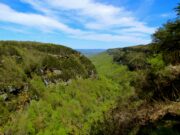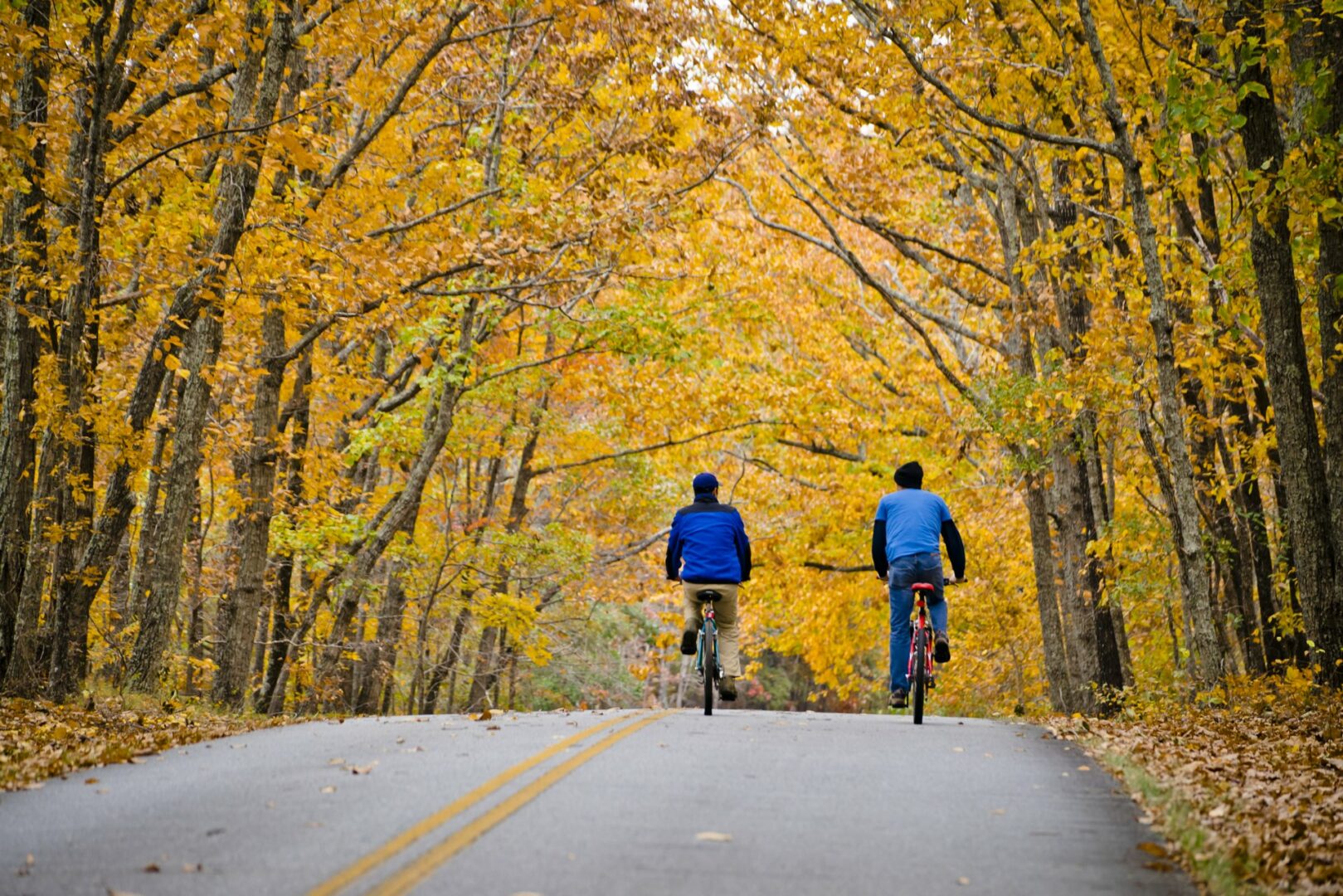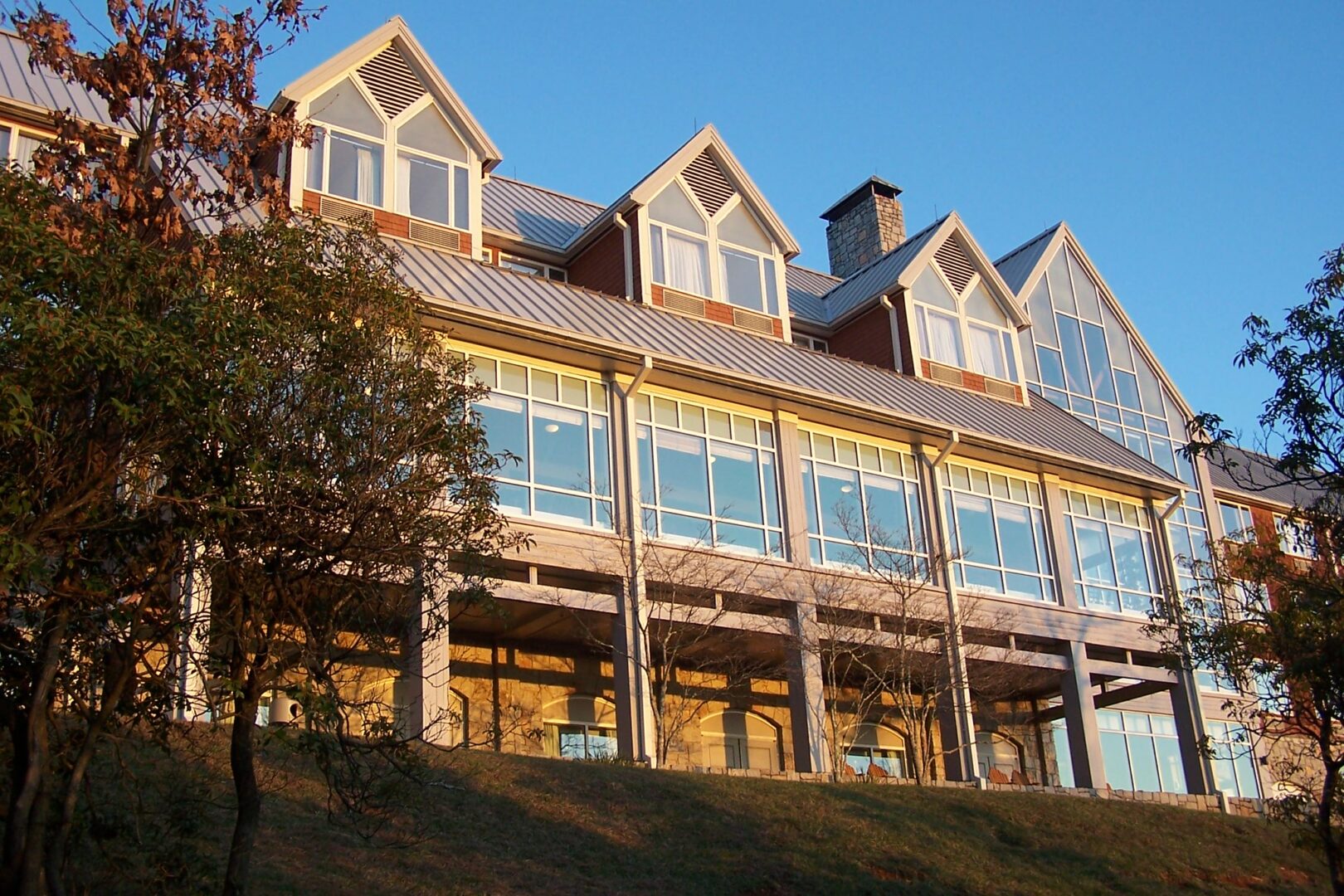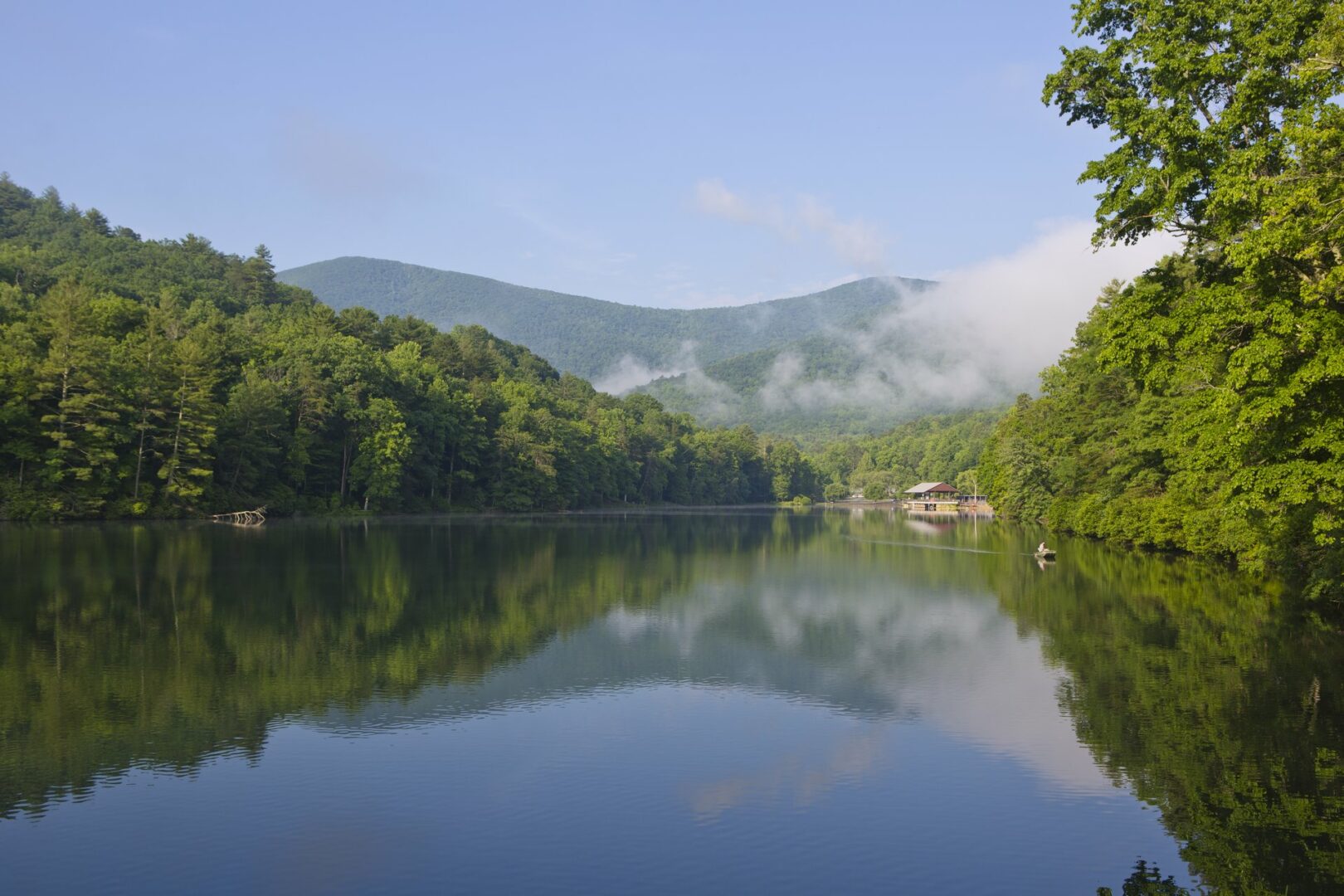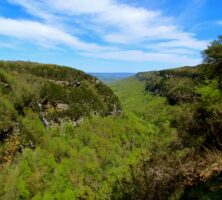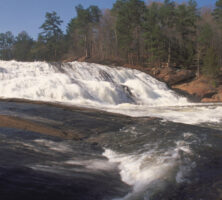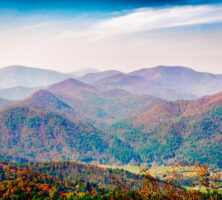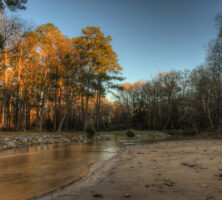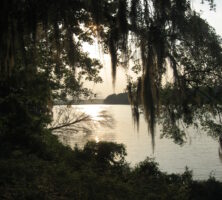Georgia State Parks and Historic Sites, a division of the Department of Natural Resources, protects more than 85,000 acres of natural beauty at more than sixty parks and historic sites in the state.
The diversity of landscape within the state parks system includes inland and coastal sites of geographic importance. The Blue Ridge Mountains, with perhaps its most scenic stretch at Georgia’s Black Rock Mountain State Park, are located along the Eastern Continental Divide, while Georgia’s “Colonial Coast” encompasses a portion of the eastern Atlantic coastline and includes all the Sea Islands. In between these sites lie Amicalola Falls, the Okefenokee Swamp (with more than forty species of mammals, more than fifty species of reptiles, sixty species of amphibians, and thirty-four species of fish), Providence Canyon, and Tallulah Gorge. State historic sites add to the variety; among them are ceremonial Indian mounds, forts from the Revolutionary War (1775-83), the Cherokee Indian capital at New Echota, battlefields of the Civil War (1861-65), plantations, and U.S. president Franklin D. Roosevelt’s Little White House in Warm Springs.
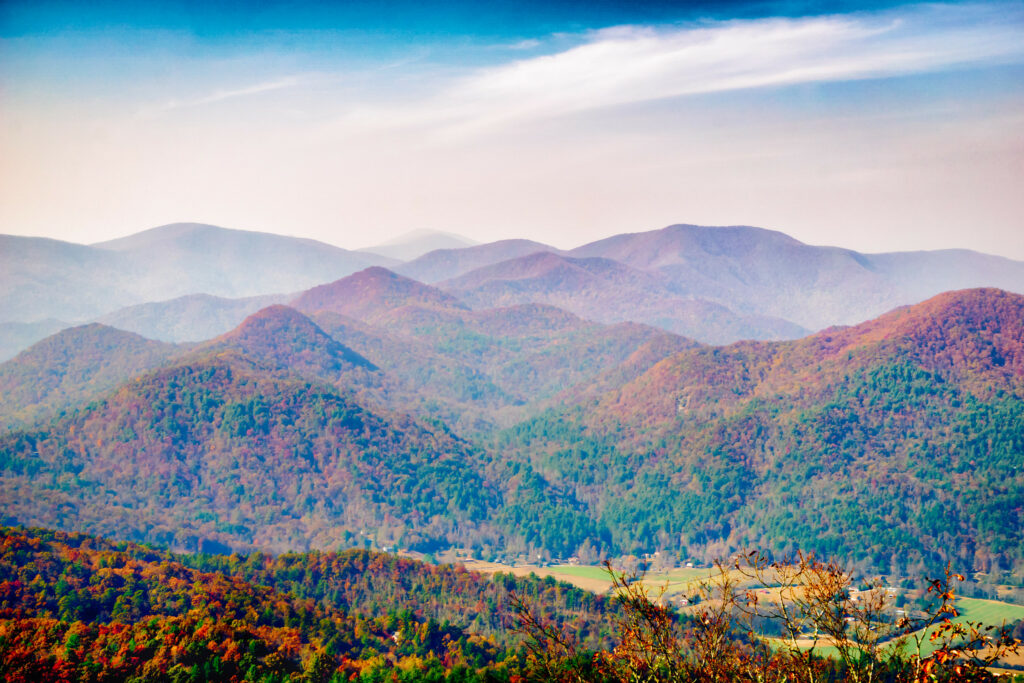
Founding and Growth
In the early twentieth century auto touring increased in popularity, putting destination spots in demand. Georgia took advantage of this new opportunity by joining the national movement toward the development of state parks in 1927, when the state senate called for a resolution to preserve the Indian Springs Reserve in Butts County. The resolution placed the spring and ten acres of land surrounding it under the jurisdiction of the State Board of Forestry, with the intent of converting the reserve into a state park. The concept of preserving land in its natural state, however, was new to the Georgia Forestry Division and to the U.S. government, which viewed forests as agricultural areas for the harvest and renewal of trees.
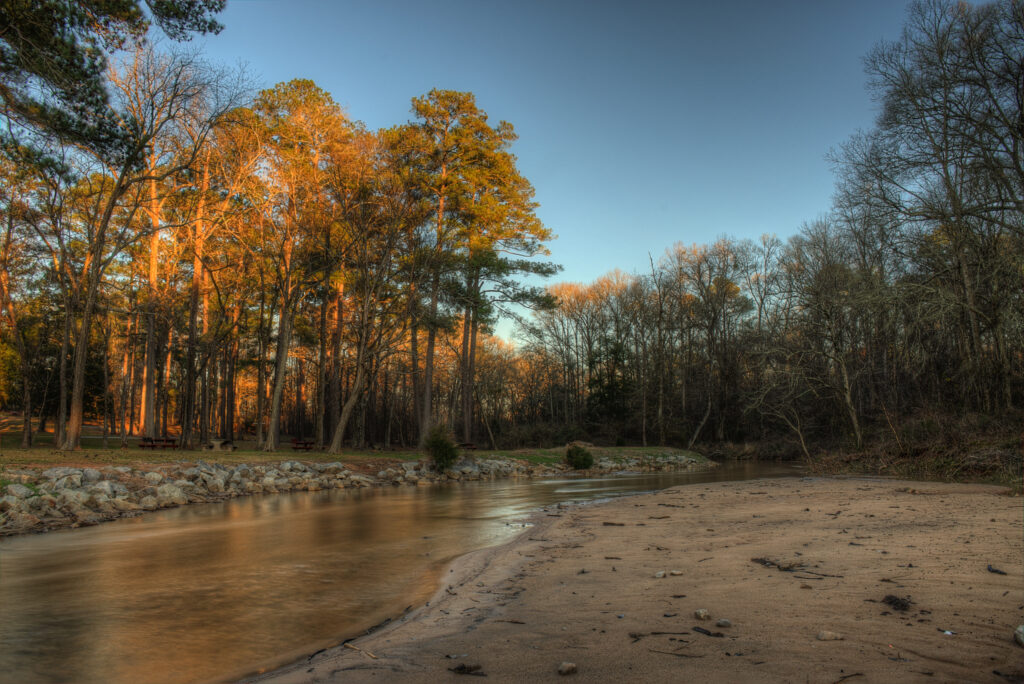
In 1931 the Georgia State Parks System was created, and the state created a commission that established two parks: Indian Springs (already named) and Vogel, near Blood Mountain in Union County. Five more state parks, referred to at the time as “forest parks,” became a part of the system during the next six years.
In 1937 the Georgia Division of State Parks, Historic Sites and Monuments was established in order to manage what became known as “recreational areas.” In 1937 Georgia law defined these areas as “natural features, scenic beauty, with or without historical, archeological or scientific buildings or objects thereon, [possessing] distinctive, innate or potential physical, intellectual, creative, social or other recreational or educational value or interest.” That same year the Department of Natural Resources was established with four divisions: Forestry; Wild Life; Mines, Mining and Geology; and State Parks, Historic Sites and Monuments. In 1973 the fourth division was renamed Parks, Recreation and Historic Sites, later shortened to Georgia State Parks and Historic Sites.
The parks system grew in large part because of the Civilian Conservation Corps (CCC), organized in 1933 as an independent agency under President Roosevelt’s New Deal. The creation of the CCC brought jobs for people in Georgia and provided manpower needed to restore and preserve the state’s land resources. CCC workers built dams, fought forest fires, planted trees, and constructed trails in the wilderness. In the mid-1930s Georgia’s state parks grew from 500 to 5,000 acres with the aid of the federal government. Among the newly created parks were F. D. Roosevelt State Park on Pine Mountain in Harris County, A. H. Stephens Historic Park in Taliaferro County (now listed on the National Register of Historic Places), and Hard Labor Creek in Morgan County.
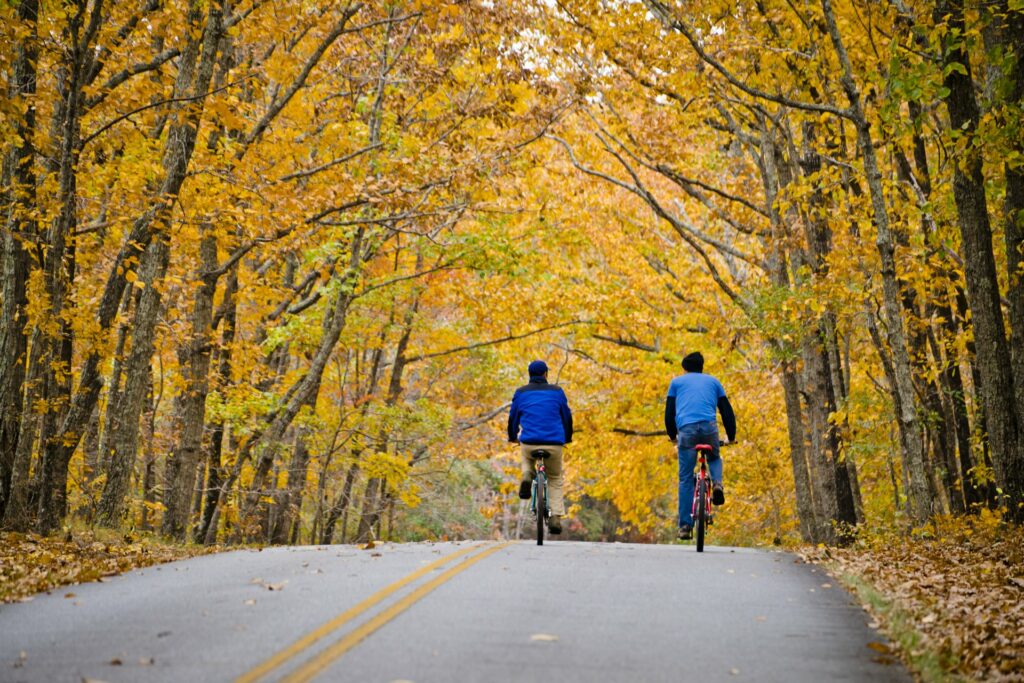
In the 1940s the state parks system continued to grow through cooperation among various agencies, including the National Park Service and the CCC. The CCC developed and turned over to the state land that eventually became Chehaw Park in Albany (Dougherty County), Little Ocmulgee in McRae (Telfair County), and Fort Mountain in Chatsworth (Murray County).
Integration
The question of segregation in Georgia came to a head in the 1950s, inspiring the state to establish a number of parks for Black citizens only. The first, George Washington Carver on Lake Allatoona near Cartersville (Bartow County), was built in 1950 through the efforts of John L. Atkinson Sr., the state’s first Black park superintendent. A Tuskegee Airman during World War II (1941-45), Atkinson served as the park’s superintendent until 1958, during which time he also established the Girl Scout Camp for Negroes on Lake Allatoona. Georgia chief justice Robert Benham (whose father, Clarence Benham, was the second Carver superintendent), wrote about George Washington Carver Park as “a Black recreational Mecca,” citing performances there by Ray Charles and Little Richard.

Additional parks built for African Americans in the 1950s included Lincoln in Millen (Jenkins County), Veterans Memorial in Cordele (Crisp County), and Yam Grande (Emanuel County). To curtail integration, Vogel and Roosevelt were leased to private vendors and operated as private clubs, while other parks, such as Georgia Veterans and Fort Yargo, developed separate zones for Blacks and whites.
Samuel Nathan, the last superintendent of Carver, became the first Black superintendent of the formerly white Richmond Hill State Park (later Fort McAllister) on the Georgia coast. After his departure, Carver and Red Top Mountain State Park, a white facility, merged operations and later became fully integrated.
Recreation and Preservation
In 1963 the first nine-hole golf course opened at Little Ocmulgee State Park, and in 1967 another opened at Hard Labor Creek. Environmentalists criticized the state parks system for compromising natural resources in this way. The legislature would not pass laws against building structures and courses on park land, but a law supporting the creation of the Georgia Recreation Commission to oversee the construction of courses and lodges did pass. During the 1970s retiring superintendents and new parks made way for many college-trained parks and recreation majors to join and implement innovations in natural preservation. Support staff in such areas as maintenance shops and trail construction, as well as a statewide sign shop, were organized or added to the network.
In 1975 Georgia governor Jimmy Carter created the Heritage Trust Commission to protect the state’s cultural and natural heritage and provide a sustainable recreation plan for a growing population. Larger parks such as Hard Labor Creek, Red Top Mountain, Roosevelt, and Unicoi became self-contained communities by the 1980s and called for sanitation, water, fire, road, sewerage, and police departments for support. Superintendents, managers, and deputy conservation rangers were specially trained at the Georgia Public Safety Training Center until there was at least one trained law official at almost all parks and historic sites.
During the 1980s lodges were added to the system at Amicalola Falls, George T. Bagby, Little Ocmulgee, Red Top Mountain, and Unicoi. The move to privatize these lodges in the 1990s would hamper operations for Amicalola, Red Top, and Unicoi; later the parks system readmitted the lodges. Privatization would also affect operations established in the 1970s, including exhibits and historical marker shops as well as rock, landscape, and historic preservation crews, many of which were either downsized or reorganized into regional maintenance crews.
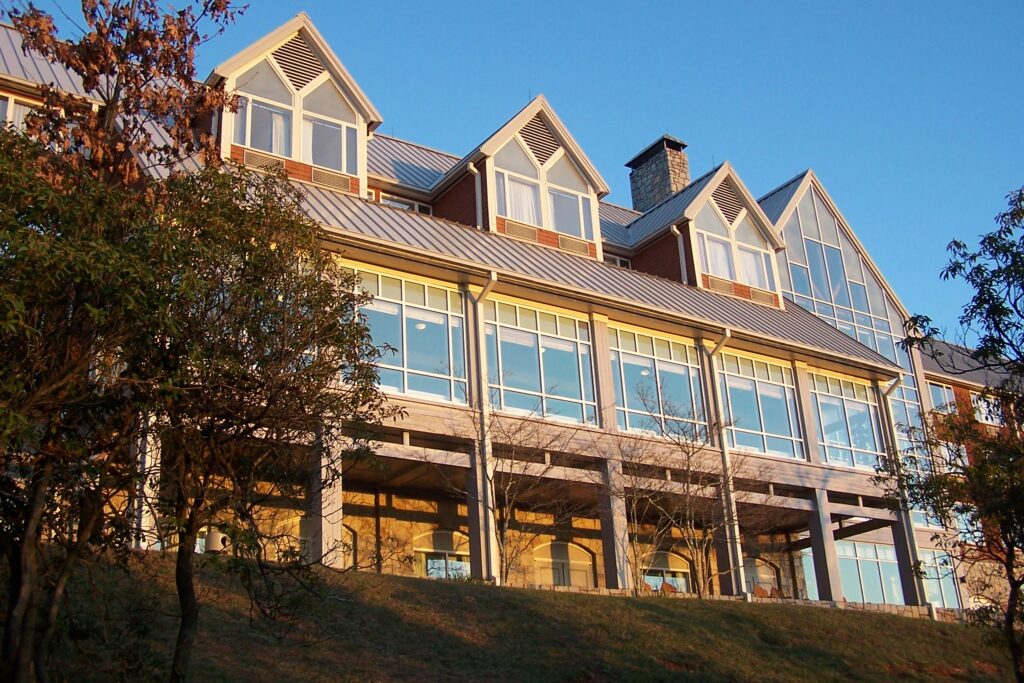
Various innovations in the management of the parks system contributed to both funding and conservation. A partnership between the Parks Division and Georgia Power led to the opening of Tallulah Gorge State Park in 1992, and a new visitors’ center was officially dedicated in 1996. Tallulah Dam, built in 1913 for power generation, became a part of Georgia Power’s plan to share management responsibilities, a plan supported by Governor Zell Miller, who pushed for the state park. In 1992 the introduction of parking fees—$5 as of 2023—helped raise several million dollars to fund park repair and improvement; park patrons may also purchase a yearly pass. The park pass system funds campground renovations, group shelter construction, dock replacements, and more.
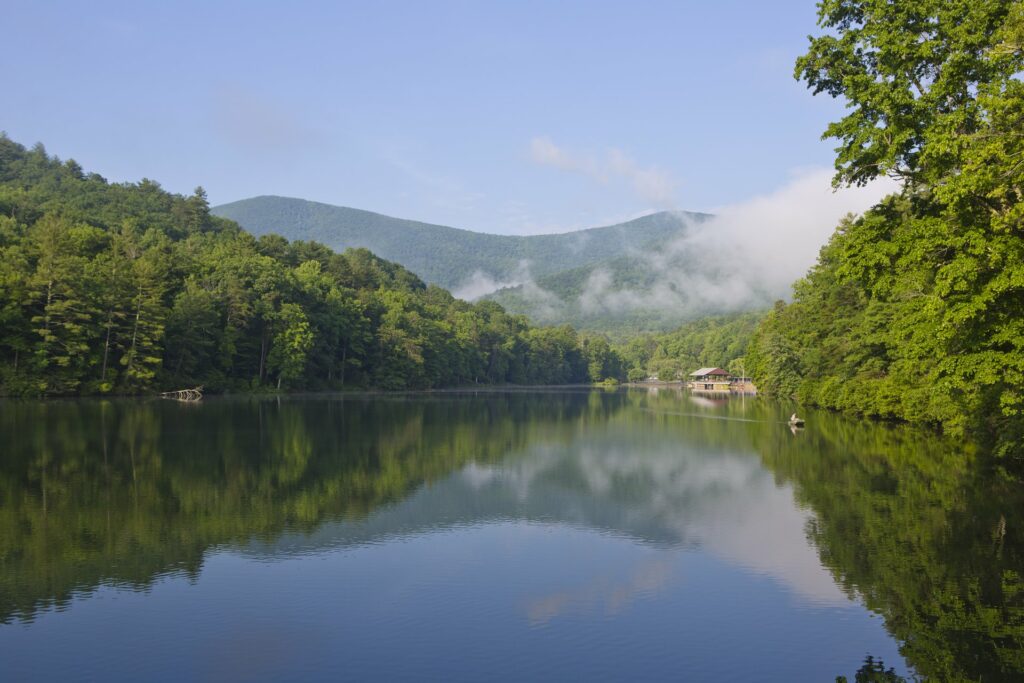
In spite of changes in government support throughout the twentieth century, the parks system has maintained its goal of growing larger and stronger, and as of 2022 it comprises about 84,000 acres—more than 8,000 of which are endangered mainly because of urban sprawl. Open year-round, the state parks provide lodging as well as outdoor activities (including camping, hiking, biking, horseback riding, swimming, boating, fishing, golf, miniature golf, tennis, volleyball, horseshoes, and birding). Throughout the year naturalists and rangers prepare and host a variety of special events, including sports activities, wildlife educational programs, holiday celebrations, art and folklore festivals, and musical performances.
Most Georgians live within an hour of a state park, and in 2020 approximately 11.8 million people patronized the parks and historic sites. The parks marked their ninetieth anniversary in August 2021 by hosting various events throughout the state to celebrate one of the oldest parks systems in the country.


